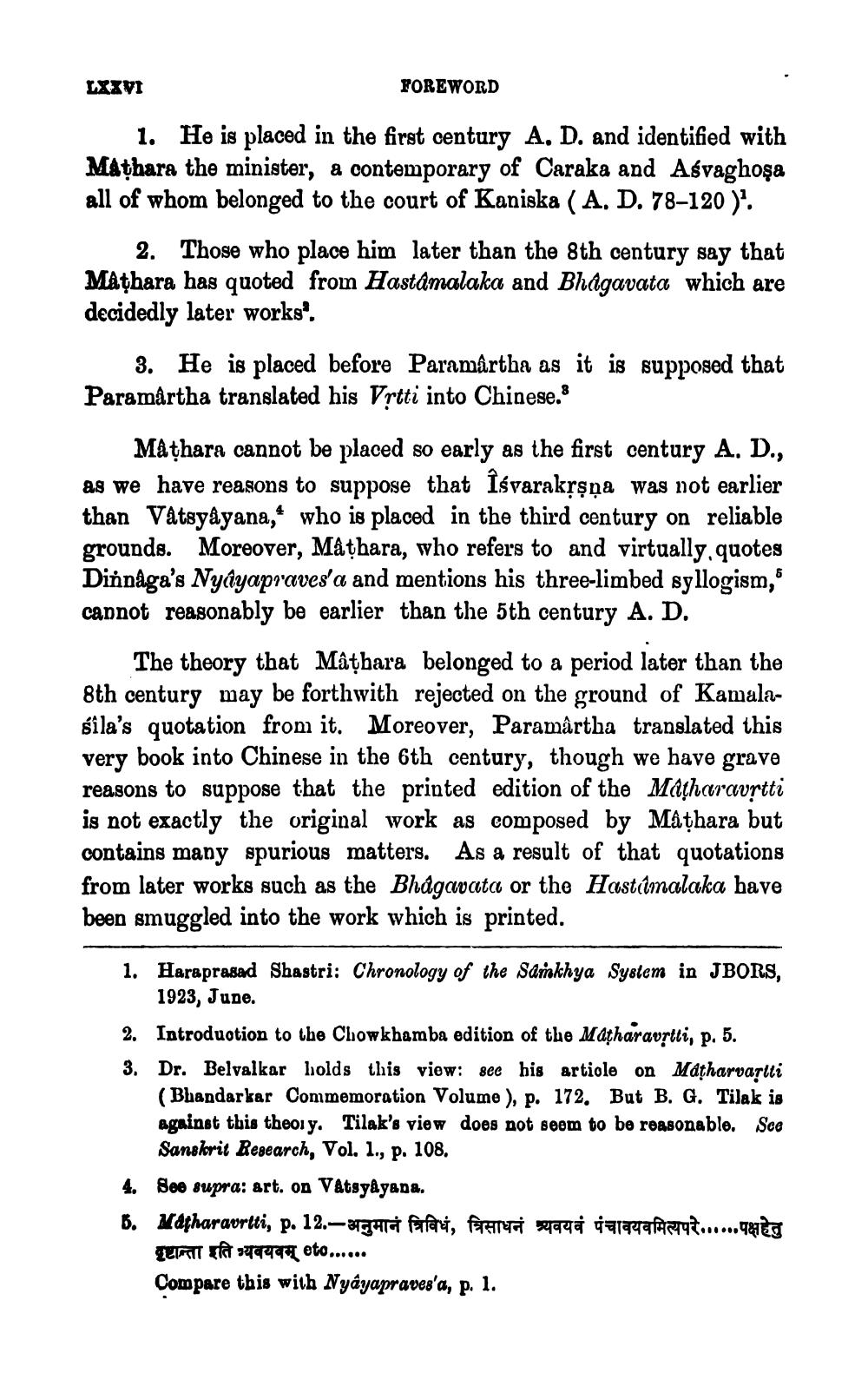________________
LXXVI
FOREWORD
1. He is placed in the first century A. D. and identified with Mathara the minister, a contemporary of Caraka and Asvaghoşa all of whom belonged to the court of Kaniska ( A. D. 78–120 ).
2. Those who place him later than the 8th century say that Mathara has quoted from Hastāmalaka and Bhagavata which are decidedly later works'.
3. He is placed before Paramartha as it is supposed that Paramartha translated his Vrtti into Chinese.
Mathara cannot be placed so early as the first century A. D., as we have reasons to suppose that Îśvarakļşņa was not earlier than Vatsyåyana, who is placed in the third century on reliable grounds. Moreover, Måthara, who refers to and virtually, quotes Dinnaga's Nyâyapraves'a and mentions his three-limbed syllogism, cannot reasonably be earlier than the 5th century A. D.
The theory that Mâțbara belonged to a period later than the 8th century may be forthwith rejected on the ground of Kamalasila's quotation from it. Moreover, Paramârtha translated this very book into Chinese in the 6th century, though we have grave reasons to suppose that the printed edition of the Matharavrtti is not exactly the original work as composed by Mathara but contains many spurious matters. As a result of that quotations from later works such as the Bhagavata or the Hastamalaka have been smuggled into the work which is printed.
1. Haraprasad Shastri: Chronology of the Sarokhya System in JBORS,
1923, Jude. 2. Introduotion to the Chowkhamba edition of the Matharavstli, p. 5. 3. Dr. Belvalkar holds this view: see his artiole on Matharvarlli
(Bhandarkar Commemoration Volume ), p. 172. But B. G. Tilak is against this theory, Tilak's view does not seem to be reasonable. Sce
Sanskrit Research, Vol. 1., p. 108. 4. See supra: art. on Vatsyâyada. B. Matharavrtti, p. 12.—31 and forei, fornya saya 1912449Z......to
दृष्टान्ता इति व्यवयवम् eto...... Compare this with Nyayapraves'a, p. 1.




